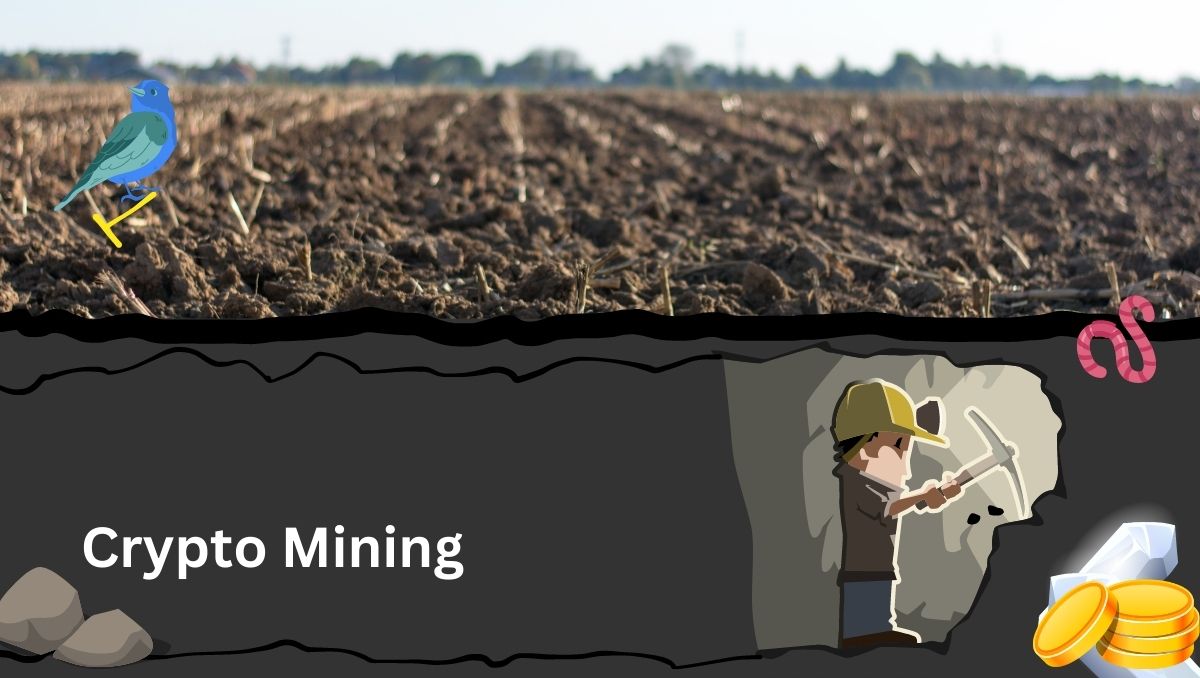Grow Your Business
Bitcoin Mining is getting tougher with New Algorithm Adjustment

In a lot of respects, getting into crypto is much easier today than it was 14 years ago when Bitcoin, the first-ever digital currency, was launched by the enigmatic Satoshi Nakamoto, leading to the emergence of the cryptocurrency industry. People are a lot more educated on the topic and have a better understanding of the nature, use cases and technology underpinning digital assets. More companies and institutions have started accepting crypto in recent years as the number of crypto users continues to increase.
Anyone can buy Bitcoin with debit cards by simply opening an account on an exchange platform and placing an order. Besides, there’s tons of information on all things crypto that can guide users on their trading or investing journey, and plenty of promising crypto projects to get involved in for anyone who finds this new asset class appealing.
However, although barriers to entry are lower, the ongoing development of the market also brings new challenges to the table, especially when it comes to Bitcoin mining. Things seem to be getting more complicated for the Bitcoin community as mining difficulty continues to increase. According to recent data, the metric has jumped from 47.89 trillion hashes to 48.53 trillion hashes as the algorithm adjusted once again.
What is Bitcoin mining?
Bitcoin relies on a proof-of-work (PoW) protocol to verify, validate and add new blocks of transactions to the decentralized blockchain ledger. The process involves using specialized software in order to solve complicated cryptographic mathematic equations – the work in PoW for which miners are rewarded with freshly minted coins – and that’s how new Bitcoins are created and enter circulation.
Bitcoin mining used to be a lot easier back in the day when everyone was able to participate in the process without much effort, using only basic equipment such as an individual computer or a mining rig at best. Since mining is now a costly and complicated affair, one can no longer mine Bitcoin at home. Nowadays, most Bitcoin miners are usually companies that pool together vast computational resources, creating the so-called mining farms.
As for the hash rate, it refers to the amount of processing and computational power that miners bring to the network and serves as a metric used to measure the level of safety and mining difficulty of a blockchain. With the hash rate increasing, mining is getting tougher, which means that more complex systems and more work are required to mint the same number of coins.
The difficulty rate is adjusted every 2016 blocks or every two weeks on average, in order to keep the amount of time necessary to add a new block around 10 minutes since new miners continue to enter the network increasing the competition. It has to be mentioned that the difficulty level for mining Bitcoin has varied greatly over the course of time, especially in the last 12 months when there was a registered rise of 64%, leading to a record high of 48.7T on April 20.
The potential effects of the mining difficulty increase
The new adjustment of the mining difficulty can spell trouble for miners who are already struggling to keep afloat in the wake of the latest crypto winter. With Bitcoin losing over 70% of its value last year, after hitting an all-time high of over $68,000 in November 2021, a lot of miners found themselves unable to cover the losses or earn a profit. Many had no choice but to sell their assets or shut down operations indefinitely.
Another issue that is brought into the spotlight by the increase in mining difficulty is Bitcoin’s negative impact on the environment. As mining difficulty increases, so does the networks’ power consumption. Bitcoin has always received harsh criticism for its lack of sustainability, so the recent hash rate jump might reignite and exacerbate these concerns. As a consequence, it’s likely to see more miners resort to renewable energy sources to support their mining operations in a more sustainable manner.
On the bright side, Bitcoin’s price evolution took a turn for the better this year as it entered an upward trend that led to an appreciation of nearly 60% in the first part of 2023. It’s true that this might only be the beginning of Bitcoin’s recovery journey, and there’s a long way to go until the king of crypto could get back or even surpass its previous highs, but the current price increase seems to be enough to offset the latest difficulty increase.
In the future, however, if the Bitcoin Price Chart doesn’t continue on a positive trend, it’s possible for smaller mining companies that are not able to maintain profitable operations on their own to be absorbed by the larger players in the industry in order to avoid a shutdown. This is not an optimistic prospect for those who may have to sell their companies, but in the long run, the difficulty increase could lead to the consolidation of the industry.
Also, there’s another positive aspect arising from Bitcoin’s recent hash rate increase that many fail to observe. A higher hash rate that requires more processing power also serves as a deterrent for bad actors to put their malicious plans into motion. Therefore, as mining becomes more challenging, it’s less likely for the network to experience assaults. As a direct consequence of the enhanced network security, more miners and investors will be tempted to join the Bitcoin community, thus increasing Bitcoin’s prospects for the future.
Bottom line
The fact that miners have to work harder to earn rewards might sound like bad news, but for the moment analysts reassure there’s no need to worry about the recent difficulty increase. With the Bitcoin price appreciating and a market that seems to be a lot more stable this year, there’s no clear indication that the change in difficulty is going to have a major impact on miners for the moment.
-

 Cyber Risk Management4 days ago
Cyber Risk Management4 days agoHow Much Does a Hosting Server Cost Per User for an App?
-

 Outsourcing Development4 days ago
Outsourcing Development4 days agoAll you need to know about Offshore Staff Augmentation
-

 Software Development4 days ago
Software Development4 days agoThings to consider before starting a Retail Software Development
-

 Grow Your Business3 days ago
Grow Your Business3 days agoThe Average Size of Home Office: A Perfect Workspace
-
Solution Review3 days ago
Top 10 Best Fake ID Websites [OnlyFake?]
-
Business Imprint4 days ago
How Gaming Technologies are Transforming the Entertainment Industry
-

 Gaming Technologies2 days ago
Gaming Technologies2 days agoHow to Set Up Text-to-Speech for Channel Points on Twitch







